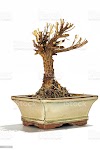WILL BONSAI LEAVES GROW BACK
Dealing with a bonsai tree is a significant joy that can't be articulated. Be that as it may, confronting difficulties on your method for improving as a bonsai tree planter is unavoidable.
People's thoughts about bonsai are falsified due to the media where they see films or pictures of bonsai inside. Bonsai can be shown inside, yet this is typically accomplished for a short timeframe. For instance, when you have visitors coming and you need to flaunt your plant, however then it ought to be moved outside once more.
As far as solidness, it couldn't take the burning warmth or get by in the snow the plant would not have been tough enough to last a few lifetimes. You might be progressively wary about caring for your plants, I realize a few people do winter their plants, yet the methodology is to put them inside a wintering box or nursery outside. Not to bring them inside for the winter.
Optional to condition issues, I would be worried about the roots spoiling, which can happen when bonsai are kept inside because dissipation happens much slower inside and the dirt can remain moist for expanded timeframes.
It would appear that the plant has a few blossoms. This demonstrates to me that the plant was solid as of not long ago. Ordinarily, if the plant is in stun or passing on it won't go to the push to make blossoms simultaneously it is dropping leaves.
So basically bonsai trees need all those things which are needed by any other plant, which include the following factors:
SUNLIGHT:
My recommendation is to move it outside where it is getting a sensible measure of daylight. I propose putting it someplace somewhat concealed because you may burn it going from being inside to legitimately out in the sun.
Ideally, it will quit dropping leaves and settle into its new position. I wouldn't anticipate that it should begin developing leaves again until late-summer. There are regularly two development spurts Spring and Fall and if a plant has gone into a stun, they, for the most part, won't regrow an enormous number of leaves until one of these periods. If an, in any case, the solid tree is dropping leaves when moved inside, and not from an ordinary regular change It is likely an irritation issue. Second, it probably is a temperature issue.
WATERING:
Overwatering is a typical explanation when the indoor Bonsai is planted in poor soil that holds an excessive amount of water. A couple of long periods of overwatering will prompt root-spoil, just unmistakable in the tree losing quality and dropping its leaves. You should water just when the dirt gets somewhat dry and once the tree improves, repot it in better soil.
Under-watering is additionally normal. A Bonsai is put in a minor pot and along these lines doesn't have a lot of stores. On the off chance that you neglect to water your tree, the roots cease to exist and the tree will bite the dust. While overwatering the tree would gradually lose quality, with under-watering the tree will drop its leaves within days. There is no fix tragically, so ensure you watch out for your tree and remember to water it.
Fertilizer:
The health of a tree depends on several factors and a key one could be soil during which it lives. after you obtain a flora it's already during a soil mixture. Using the proper soil mixture for your Bonsai trees is crucial. Soil is vital to provide your trees with nutrients, however, it conjointly has to drain properly, offer enough aeration and retain water. although most (online) tree retailers sell ready-mixed soils,If you bought it from a general garden nursery, the potting combine is sometimes a basic one, and therefore the plant isn't anticipated to measure during a pot all of its life, rather it's expected to either be repotted into a top-quality potting combine or placed within the ground. but you can make Bonsai soil at home doing this yourself can save cash and allows you to regulate mixtures per tree-species.
Consult farming books, the web or just raise nursery employees regarding the right soil kind for the tree that you're getting. tree soils ar composites of the essential necessities however are specifically developed for long-run plants during a potted setting.
Your bonsai tree is tropical, and ought to be 'evergreen'.In the house, you can also experience difficulty with 'bug bugs'. These are infinitesimal aphid-like animals and live inside, with us in our homes. They bite the dust outside, in an increasingly moist, colder climate. They will lock onto any sugar source and recreate unquenchably. Given enough time this shows visibly as little white 'dust' on the leave and once in a while string type lighten.
Potential arrangements:
move it outside, set out on the utilization of pesticides (explicit concoction airborne showers are ideal)
To be progressively helpful, I would suggest an open-air nursery for this species and committed watering. In freezing snaps utilize wool to cover. By taking all these above measures your fallen bonsai tree leaves will grow back and it will again become alive.
I would likewise suggest that bonsai is a point by point and exact workmanship to rehearse and that just as the 'acknowledged lessons' you must have the option to evaluate things unbiasedly, and refine your method given the earth you are working in.
If you somehow happened to go for any indoor species, I would consistently prescribe focus and Ulmus parvifolia (tropical fig/elastic plant and Chinese elm separately) over all else.
Keep in mind, bonsai is an Asian established workmanship, yet your trees won't be developing in Asia.
BEST OF LUCK










0 Comments
plz do not any spam link in the comment box.